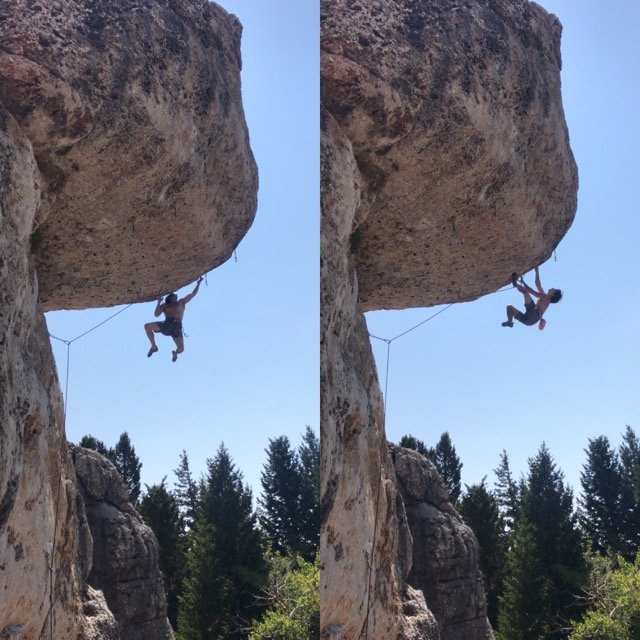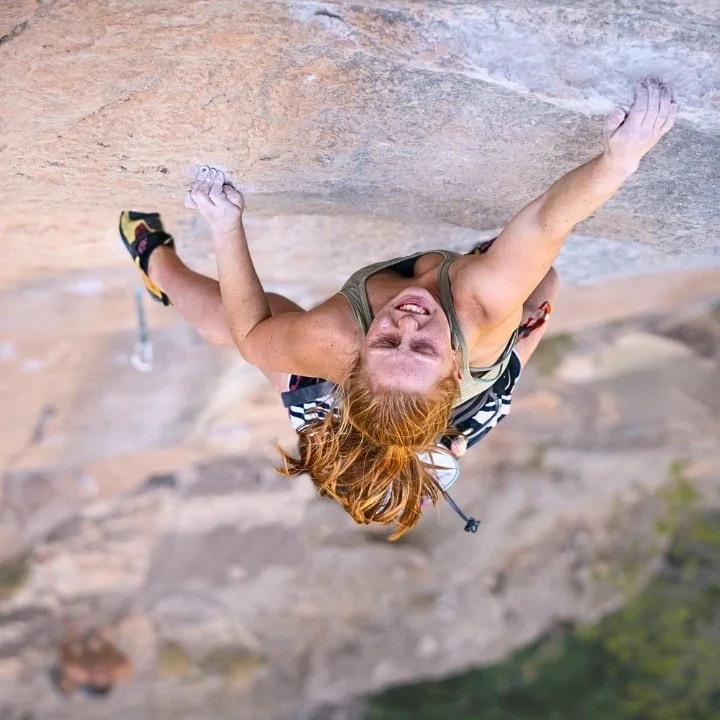Not All Pyramids Are Built the Same
If a 12d takes you five days to send, and a 13b takes you five days to send, which one was more important for your development as a climber?
Coaches and trainers often talk about creating a grade pyramid to build experience. An important assumption behind pyramids that doesn’t get discussed often enough is that the further the grades get below your project level, the more variation you should be including in the climbs you do. This post explains why that’s important as well a method you can use to make sure you’re getting the most out of your pyramid building.
*The example below uses boulders, but this method can be used for routes as well.

Let's say you just climbed your first V9 last year. You’ve been climbing for several years now and, even though you feel like you’ve consistently improved each year, sending your first V9 feels like a milestone in your climbing.
What’s next? Do you pick out a V10 to try and send next season? Should you climb a lot of volume? You’re feeling pretty strong right now, maybe you can jump straight to V11 this year if you picked the right one?
Allow me to make a suggestion.
For your next season, build a quality pyramid. For this example person who just sent their first V9, it would look something like this.
V9- Do another one or two - Shoot for low hanging fruit. Find a few that you’re excited for and that seem realistic.
V8- Send more of these!- Climb more of the classics that you haven’t done yet. If the few you have done before were all the same style, start branching out a bit and diversify your sends.
V7- Start cleaning up the ones you’ve left behind- These should be the climbs that you skipped over in the past because they were harder styles or slightly less classic. If you still have classic problems at this grade left to do then you should be doing those.
V6- ATB (All The Boulders)- Do every climb at this grade. You should be trying to take down a new one every day as part of your warm up. When you find ones that are either really hard styles or super strange, perfect, keep going. When you run out of climbs at this grade that you can do quickly you know that what you have left are the problems with the most to teach you. As long as there isn’t a dangerous landing or a move that will injure you then you should aim to do everything at this grade.
You might be thinking “But Nate, What if I waste a season doing this when I could have done a V10?”
My response is:
1. If you do this, your season won’t be wasted. You’ll have climbed a lot of new boulders in more styles than you would have if you had only projected a few hard things. Even if you don’t send a new highest number, you’ll see a lot of growth.
2. Progress doesn’t always come with new numbers. A lot of people hit a hard plateau when they stop focusing on progressing their skills and make their sole goal climbing a harder number. Climbing your first V10 is a lot sexier than leveling up your crimp climbing from V5 to V8. It looks a lot cooler being the person who spends a whole season projecting a double digit climb rather than being the one answering the question, “Why are you falling on this V6 if you’ve already climbed V9?” You don’t get the instant gratification of trying big numbers, but this approach is often what separates being someone who occasionally climbs a V10 from being a V10 climber.
3. Using this method has the benefit of building and maintaining momentum through a climbing season. You can’t send your new hardest boulder every week. However, you can send “easier” climbs in harder styles and new second and third tier boulders with a high frequency. Momentum builds confidence, and confidence gets you on top of boulders.
4. The grades on this rubric don't have to be fixed in place all season. If you start doing V8’s and V9’s in a single session a month into the season then consider shifting this rubric up a grade and have “one or two V10’s” as your top-end goal and “climbing every V7” as your bottom-end goal.
All of the levels in this type of pyramid are valuable. If a V6 takes you as many tries as a V8 then the relative difficulty is the same for you. Improvement comes from challenges not from the number they are given. If you focus on being challenged and trying hard then the numbers will follow.
Climb everything and climb it well.

Long-time friends Nate and Ravioli Biceps discuss lessons they’ve pulled from video gaming that can help inform our climbing.
I never thought I’d be recommending this, but some of y’all should be putting less effort into becoming technically better climbers.
Do you really have terrible willpower? Or are you surrounded by distractions and obstacles?
Giving artificially low grades to climbs increases their perceived value for our training and development. The more something is mis-graded the more we naturally want to prioritize it.
Discussion around grades can be so polarizing that many of us avoid the topic.
Climbing starts off as this self-feeding cycle that has you wishing you could climb seven days a week. What happens when this cycle stops bringing improvement though?
Use strength to leverage every other aspect of your climbing, not replace them.
If everything you do is a finger workout, then when do your hands get a chance to recover?
There is a common theme between a grilled cheese sandwich and good training advice.
The more accurately we define our problems, the more approachable it will feel to find solutions.
Maybe the most understated way of getting better is to build fallback successes into your plan.
How much time should climbers spend becoming more well rounded vs. improving their strengths?
As cool as assessments and standards are, they can easily leave people settling for “good enough” when they have the potential to do much more.
Being able to quickly recognize familiar sequences is a crucial ingredient to harder climbing.
It’s far more comfortable for us to blame ignorance for our lack of progress than it is to blame our own efforts.
Once you learn the power of good tactics it can be hard to step away from them.
Of all the people that I spoke with this year who were stuck in plateaus, many of them had the same thing in common: they climbed and trained alone.
The belief that you are getting better at climbing is one of the most important ingredients in actually getting better at climbing.
How many times have you gone up a route and felt overwhelmed, only to look back and realize that it’s not as intimidating as it initially seemed?
Most of us go into a training plan or an outdoor season with an expectation, but expecting results can make us brittle when problems arise.
Whenever there is a training article online or some tidbit of knowledge on social media, it’s important that you consider the context.
At a certain stage in climbing, the hand and foot beta you use stops being the deciding factor in whether or not you are successful.
The intermediate climber’s problem with perception starts to arise when they can’t recall all of the solutions they have attempted during the problem solving process.
A better way to view grades and progression?
Switching back and forth between sport climbing and bouldering can be difficult…
Alex Megos once said that conditions don’t matter, but we all know that’s not true… or is it?
There’s one often overlooked thing that has the power to positively – or negatively – affect every single day of climbing for the rest of your life.
There is a point at which continuing a tactical approach can slow your climbing gains.



































Inspiration is intoxicating, but often fades as quickly as it shows up.